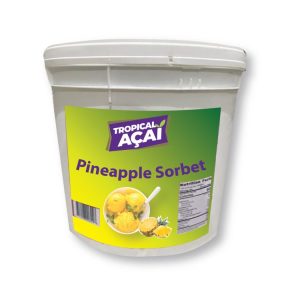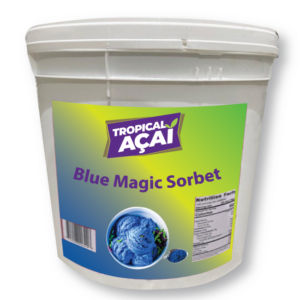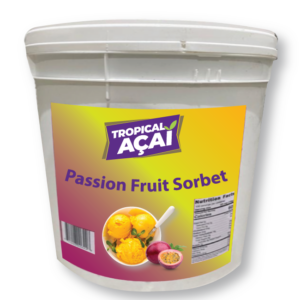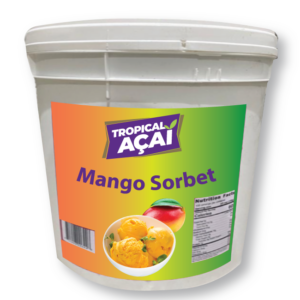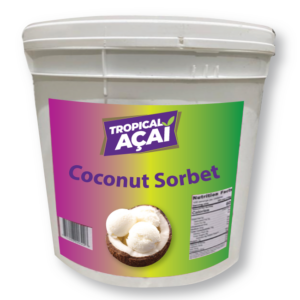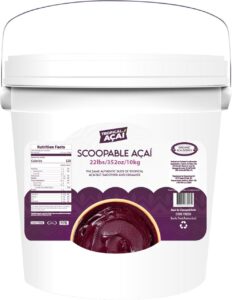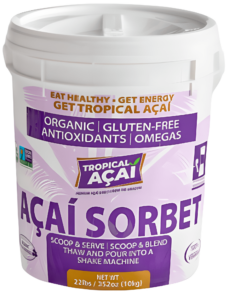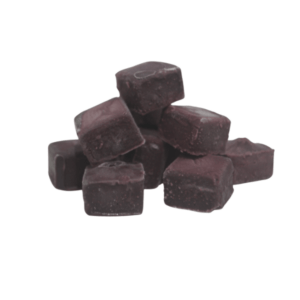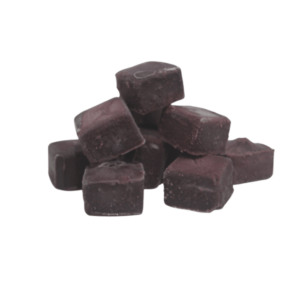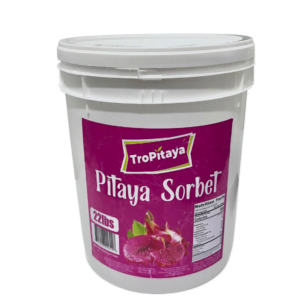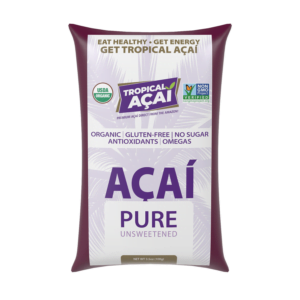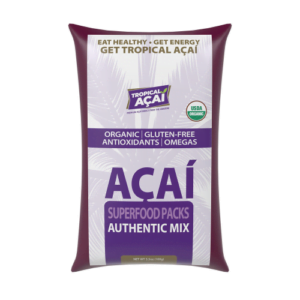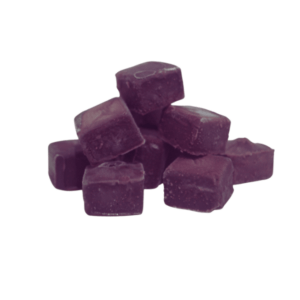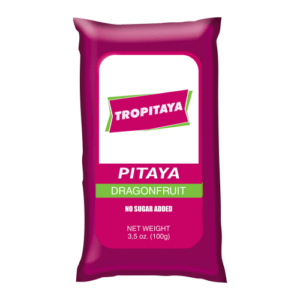Regarding superfoods, pitaya and acai have been making waves in health and wellness. These tropical fruits are popular for their vibrant colors, unique flavors, and potential health benefits. But which one is truly the superior superfood? Is it the exotic pitaya with its striking appearance or the antioxidant-rich acai with its Amazonian origins?
In this article, we dive deep into the pitaya vs acai debate, exploring their nutritional profiles, health benefits, culinary uses, and more. So, if you’re ready to discover the differences between these two superfruits and find out which might be a better fit for you, grab a smoothie, and let’s get started!
Key Takeaways:
- Both pitaya and acai are nutrient-dense fruits with distinct flavors and appearances.
- The nutritional profiles and health benefits of pitaya and acai vary, offering unique advantages.
- The choice between pitaya and acai depends on personal taste preferences, nutritional goals, and availability.
- Both fruits can be incorporated into various culinary creations, including smoothie bowls and desserts.
- Regardless of your choice, adding either pitaya or acai to your diet can contribute to a well-rounded and healthy lifestyle.
Origins and Appearance
Regarding the origins of pitaya and acai, these tropical fruits have distinct backgrounds. Pitaya, also known as dragon fruit, hails from the vibrant regions of Central America and Mexico. On the other hand, acai berries thrive in the lush Amazon rainforest in Brazil. These diverse environments contribute to the unique characteristics of each fruit.
Pitaya stands out with its striking appearance. Its outer skin boasts a vivid hue and is often covered in scales, resembling a mythical creature. When sliced open, pitaya reveals an enchanting sight with its speckled, edible inner flesh.
Acai berries, on the other hand, enchant with their deep purple color and grape-like appearance. They are small, round fruits that grow in clusters, dangling gracefully from the acai palm trees.
| Fruit | Origins | Appearance |
|---|---|---|
| Pitaya | Central America and Mexico | Vibrant outer skin with a speckled, edible inner flesh |
| Acai | Amazon rainforest in Brazil | Dark purple color with a grape-like appearance |
Both pitaya and acai possess unique visual characteristics that further enhance their allure. Whether it’s the vibrant colors of pitaya or the deep purple of acai, these fruits are a feast for the eyes.
Nutritional Profiles and Health Benefits
Both pitaya and acai offer impressive nutritional profiles and many health benefits. They are packed with essential nutrients and antioxidants that can support overall well-being. Let’s take a closer look at both fruits’ nutritional profiles and health benefits.
Pitaya Nutritional Profile
Pitaya is a nutritional powerhouse containing many vitamins, minerals, and antioxidants. It is an excellent source of vitamin C, providing more than the daily recommended intake in a single serving. Additionally, pitaya is rich in calcium, supporting bone health, and iron, essential for red blood cell production.
Acai Nutritional Profile
Acai berries are known for their high antioxidant content, particularly anthocyanins. These antioxidants help protect the body against free radicals and oxidative stress. Acai also contains healthy fats, including omega-3, omega-6, and monounsaturated fats, which benefit heart health. Furthermore, acai berries are a good source of dietary fiber, contributing to digestive health and satiety.
Health Benefits of Pitaya
Pitaya offers several health benefits due to its nutrient-rich composition. The high vitamin C content in pitaya can support a healthy immune system and promote collagen production for healthy skin. Pitaya also contains betalains, antioxidants linked to reduced inflammation and improved cardiovascular health. Additionally, the pitaya fiber can aid digestion and help maintain a healthy weight.
Health Benefits of Acai
Acai berries have gained popularity for their potential health benefits. The antioxidants in acai can help reduce oxidative stress and inflammation, protecting against chronic diseases. Acai’s healthy fats, including omega-3s, provide cardiovascular benefits by improving cholesterol levels and reducing the risk of heart disease. Additionally, the fiber content in acai can support digestive health and promote feelings of fullness, aiding in weight management.
| Pitaya | Acai | |
|---|---|---|
| Vitamin C | High | Moderate |
| Calcium | Good Source | Low |
| Iron | Good Source | Low |
| Antioxidants | High | High |
| Healthy Fats | Low | High |
| Dietary Fiber | Low | Moderate |
The nutritional profiles and health benefits of pitaya and acai offer unique advantages. Consider incorporating both fruits into your diet to reap their full range of nutritional benefits.
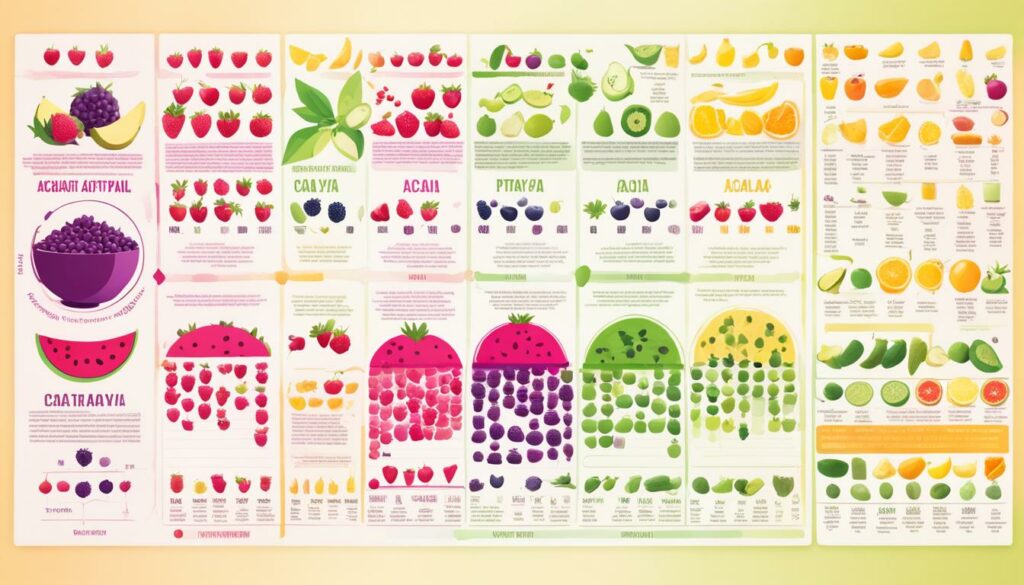
Flavor Profiles
When it comes to flavor, both pitaya and acai offer unique taste experiences that can tantalize your taste buds. Let’s explore the distinct flavors of these tropical superfruits:
Pitaya: Mildly Sweet and Refreshing
Pitaya, also known as dragon fruit, is celebrated for its delightful flavor that perfectly balances sweetness and refreshment. With its mildly sweet taste and refreshing undertones, pitaya has been likened to a delightful blend of kiwi and pear. This exotic fruit adds a tropical twist to any recipe and is a popular choice for those who prefer milder, more refreshing flavors.
Acai: Tart, Sweet, and Irresistible
On the other hand, Acai berries offer a unique flavor profile that combines tartness and sweetness in perfect harmony. The taste of acai is often described as a tantalizing mixture of berries and chocolate. Its slightly tart notes are beautifully complemented by its natural sweetness, creating a flavor that is difficult to resist. Acai’s vibrant taste adds excitement to any dish or beverage.
While pitaya is generally considered sweeter than acai, the choice between the two ultimately comes down to personal taste preferences and desired sweetness levels. Whether you prefer the mild sweetness and refreshing quality of pitaya or the irresistible blend of tartness and sweetness in acai, both fruits offer a delectable flavor experience.
Now that we’ve explored the flavor profiles of pitaya and acai, it’s time to delve deeper into the factors to consider when choosing between these two tropical superfruits.
| Flavor Profiles | Keywords |
|---|---|
| Pitaya | Flavor of Pitaya |
| Acai | Flavor of Acai |
Choosing between Pitaya and Acai
When it comes to choosing between pitaya and acai, there are several factors that you should consider. From taste preferences to nutritional goals and availability, making an informed decision is essential. Both fruits offer unique qualities and can be enjoyed in various forms and dishes, allowing for personal preference and creativity in the kitchen.
First and foremost, taste preference plays a crucial role in choosing between pitaya and acai. Pitaya has a mildly sweet and refreshing flavor, often compared to a combination of kiwi and pear. On the other hand, acai has a slightly tart, sweet taste that can be likened to a mix of berries and chocolate. Consider your personal preferences and which flavor profile appeals to you the most.
Another important factor to consider is your nutritional goals. Pitaya is a good source of vitamin C, calcium, and iron, while acai is rich in anthocyanins, the powerful antioxidants responsible for its deep purple color. Depending on your specific dietary needs, one fruit may align better with your goals. It’s essential to approach the potential health benefits of these fruits with a balanced perspective and incorporate them into a varied and balanced diet for optimal nutrition.
Lastly, availability should be taken into account. Pitaya and acai may have varying degrees of accessibility depending on your location. While both fruits can be found in some specialty stores and online, availability may be limited in certain regions. Consider the ease of obtaining each fruit and factor that into your decision-making process.
Summary of Factors to Consider:
- Taste preference: Pitaya (mildly sweet and refreshing) vs Acai (slightly tart, sweet)
- Nutritional goals: Pitaya (vitamin C, calcium, iron) vs Acai (anthocyanins, antioxidants)
- Availability: Consider accessibility in your specific location
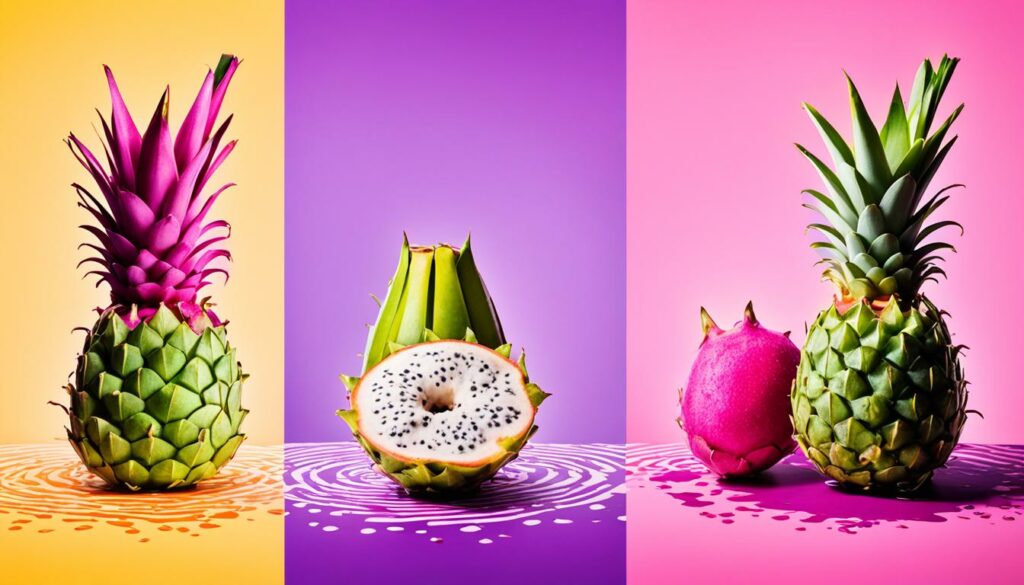
By evaluating these factors, you can make an informed decision when choosing between pitaya and acai. Both fruits have unique benefits, so incorporating them into your diet can be a delicious and nutritious way to support your overall health and well-being.
Culinary Uses of Pitaya and Acai
Pitaya and acai are incredibly versatile fruits that can be incorporated into various culinary creations. These vibrant superfoods add a burst of color to your dishes and pack a punch of flavor and nutrition. Let’s explore the various culinary uses of pitaya and acai:
Pitaya:
- Smoothie bowls: Pitaya makes a fantastic base for creating visually stunning and delicious smoothie bowls. Blend the flesh of pitaya with your favorite fruits and toppings for a refreshing and nutritious breakfast or snack.
- Juices: Add pitaya to your favorite juice recipes to enhance their taste and give them a vibrant pink hue.
- Sorbets: Pitaya is the perfect ingredient for making homemade sorbets. Its natural sweetness and refreshing flavor make for a delightful frozen treat.
- Snacks: Slice pitaya into bite-sized pieces and enjoy it as a standalone snack, or add it to fruit salads, yogurt bowls, or granola bars for extra flavor.
Acai:
- Smoothie bowls: Acai bowls have gained immense popularity in the health food scene. Blend unsweetened acai pulp with frozen fruits, nut milk, and your favorite toppings to create a delicious and nutritious breakfast or post-workout treat.
- Supplements: Acai is often available in supplement form, which can be easily added to smoothies or taken as capsules to boost your daily antioxidant intake.
- Sorbets: Just like pitaya, acai can be used to make delectable sorbets. Its rich, berry-like flavor adds a delightful twist to frozen desserts.
In addition to these specific culinary uses, pitaya and acai can be incorporated into various other dishes. They can be added to salads, used as toppings for pancakes or waffles, blended into cocktails, or even used to make creative desserts like cakes and tarts. The possibilities are endless!
| Pitaya | Acai |
|---|---|
| Smoothie bowls | Smoothie bowls |
| Juices | Supplements |
| Sorbets | Sorbets |
| Snacks | – |
| Salads | – |
| Cocktails | – |
| Desserts | – |
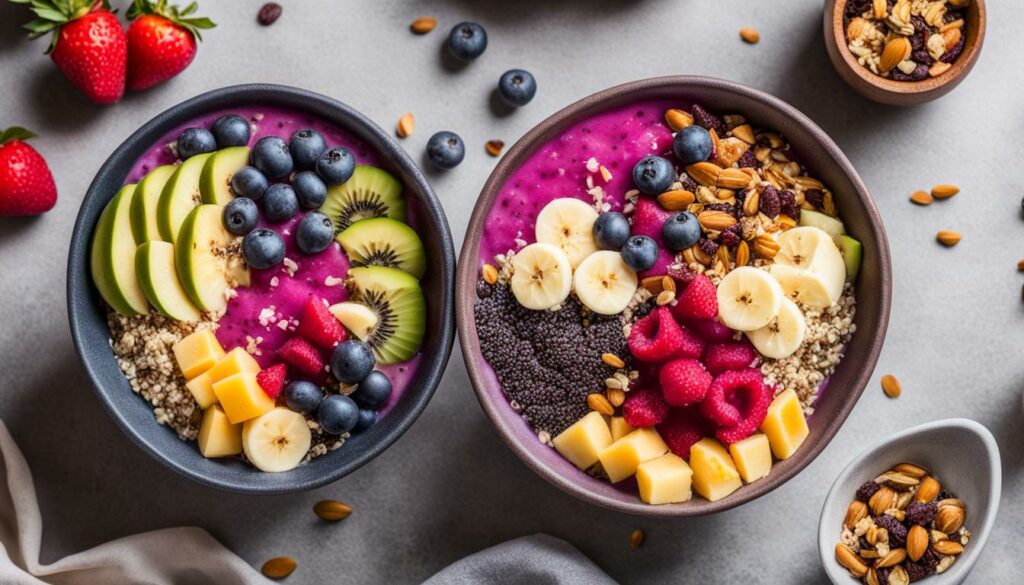
Conclusion
In conclusion, pitaya and acai are two tropical superfruits that offer unique flavors and nutritional benefits. Pitaya, also known as dragon fruit, is native to Central America and Mexico, while acai berries are found in the Amazon rainforest in Brazil. Both fruits are packed with antioxidants and essential vitamins and minerals, making them valuable additions to a balanced diet.
Personal taste preferences play a significant role when choosing between pitaya and acai. Pitaya has a mildly sweet and refreshing taste, resembling a blend of kiwi and pear. On the other hand, Acai boasts a slightly tart and sweet flavor, often compared to a mix of berries and chocolate. It’s essential to consider your palate when deciding which fruit to incorporate into your diet.
Additionally, nutritional goals and availability should be considered. Pitaya is a good vitamin C, calcium, and iron source, while acai is known for its anthocyanin content and healthy fats. Depending on your needs, one fruit may align better with your desired nutritional profile. Lastly, both pitaya and acai can be enjoyed in various culinary creations, such as smoothie bowls, juices, and desserts, allowing versatility in incorporating these superfruits into your meals.
In summary, whether you choose pitaya or acai, both fruits provide a range of health benefits and can contribute to overall well-being. Incorporating these tropical superfruits into your diet adds a burst of flavor and offers essential nutrients and antioxidants. So, why not indulge in the vibrant and nutritious world of pitaya and acai while supporting your health and taste buds?



